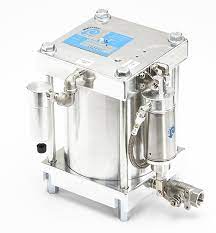Introduction
When it comes to managing excess water on your property, a well-designed drainage system, or “Drain All,” is crucial. Drain All refers to a set of techniques and systems that help redirect and manage water, preventing water damage and improving the overall health of your soil and landscape.
Understanding Drain All
Drain All encompasses various drainage systems, each serving a specific purpose. Understanding these systems is essential before deciding which one suits your needs.
Types of Drainage Systems
- Surface Drainage: This method focuses on removing water from the surface of your property, preventing pooling and waterlogged soil.
- Subsurface Drainage: Subsurface drains, also known as French Drain Systems, are installed beneath the ground to eliminate excess water from below the surface.
- Sump Pump Systems: Sump pumps are commonly used in basements and crawl spaces to prevent water accumulation and flooding.
How Drain All Works
Drain All systems work by creating pathways for water to flow away from your property, channeling it towards designated outlets or drainage areas. This helps in preventing water from accumulating and causing damage.
Benefits of Effective Drain All
Investing in proper Drain All techniques offers a range of benefits, making it a valuable addition to your property.
- Preventing Water Damage: A well-maintained drainage system prevents water from seeping into foundations, basements, and other vulnerable areas, protecting your property from water damage.
- Minimizing Soil Erosion: Drain All techniques redirect excess water, reducing soil erosion and preserving the integrity of your landscape.
- Improving Soil Health and Plant Growth: Proper drainage ensures adequate moisture levels for plants while preventing waterlogged soil that can harm plant roots.
- Enhancing Property Aesthetics: Drain All solutions can be seamlessly integrated into your landscape, improving its overall aesthetics.
Top 10 Drain All Techniques
Here are the top 10 Drain All techniques that can effectively manage excess water on your property:
- Installing a French Drain System: This popular subsurface drainage system involves a perforated pipe surrounded by gravel to redirect water away from the property.
- Creating a Dry Well: A dry well is a chamber filled with gravel or rock that collects and slowly disperses excess water underground.
- Implementing a Rain Garden: Rain gardens are strategically designed to collect rainwater, allowing it to slowly percolate into the ground and recharge groundwater.
- Building a Swale: A swale is a shallow, vegetated channel designed to redirect and slow down the flow of water.
- Installing Downspout Extensions: Extending downspouts away from the foundation helps prevent water from accumulating near the building.
- Implementing Grading and Sloping Techniques: Proper grading and sloping of the landscape direct water away from structures.
- Constructing Berms and Terraces: Berms and terraces help control water flow on sloped areas, preventing erosion.
- Implementing a Permeable Paving System: Permeable pavements allow water to pass through, reducing surface runoff.
- Utilizing Catch Basins and Inlets: Catch basins and inlets collect and divert water to proper drainage systems.
- Installing Sump Pump Systems: Sump pumps efficiently remove water from basements and crawl spaces.
Common Drain All Problems and Solutions
While Drain All systems are effective, they may encounter some issues over time. Here are common problems and their solutions:
- Clogging of Drainage Systems: Regular maintenance, including cleaning and debris removal, prevents clogging.
- Poor System Design: Proper planning and design help avoid ineffective drainage solutions.
- Inadequate Maintenance: Regular inspections and maintenance ensure your Drain All system functions optimally.
- Dealing with Waterlogging: Adding soil amendments or regrading can address waterlogged areas.
- Repairing Drainage Systems: Promptly addressing damages ensures the system operates efficiently.
Environmental Impact of Drain All
While Drain All offers numerous benefits, it’s essential to consider its environmental impact.
Effect on Local Water Systems
Proper drainage systems prevent excess runoff, which could carry pollutants into local water bodies.
Impact on Aquatic Life
By reducing soil erosion and minimizing pollutants entering water bodies, Drain All positively impacts aquatic ecosystems.
Mitigating Negative Consequences
Proper maintenance and eco-friendly drainage solutions can help reduce the environmental impact of Drain All.
DIY vs. Professional Drain All Installation
Deciding whether to install Drain All systems yourself or hire professionals requires careful consideration.
Pros and Cons of DIY Installation
Pros:
- Cost savings on labor
- A sense of accomplishment
- Flexible schedule
Cons:
- Lack of expertise
- Time-consuming and physically demanding
- Risk of improper installation leading to future issues
Advantages of Hiring Professionals
Pros:
- Expertise and experience
- Proper planning and design
- Efficient and timely installation
Cons:
- Higher initial cost
- Less personal involvement in the installation process
Drain All and Landscaping
Integrating Drain All systems into your landscaping plan is essential for a harmonious and functional property.
Integrating Drainage Systems into Landscape Design
Consider the following tips when incorporating Drain All into your landscape:
- Choose appropriate drainage techniques based on your landscape’s needs.
- Opt for visually appealing solutions, such as rain gardens and swales.
- Work with professional landscapers to ensure seamless integration.
Landscaping Solutions for Drain All
Work with a landscaping expert to create a functional and aesthetically pleasing design that complements your Drain All system.
Here are some frequently asked questions about Drain All:
- What is the Cost of Installing Drainage Systems? The cost varies based on the chosen technique and the size of the property. DIY solutions may be more affordable, but professional installations ensure effectiveness.
- How to Identify Drainage Problems in a Yard? Signs of poor drainage include pooling water, waterlogged soil, and erosion.
- Can I Install a Drainage System Myself? While some DIY solutions are possible, complex installations may require professional expertise.
- What Permits are Required for Drain All Projects? Permit requirements vary by location and the extent of the project. Check with local authorities for specific regulations.
- How Often Should Drainage Systems be Inspected? Regular inspections, ideally annually, help identify and address potential issues early on.
- Can Drain All Techniques be Applied to Commercial Properties? Yes, Drain All techniques can be adapted to suit the needs of commercial properties.
- How Long Does a Drainage System Last? With proper maintenance, a well-installed Drain All system can last for many years.
Conclusion
Investing in proper Drain All techniques is essential for the health and aesthetics of your property. By understanding the various Drain All systems and their benefits, you can make informed decisions to create a functional and sustainable landscape



